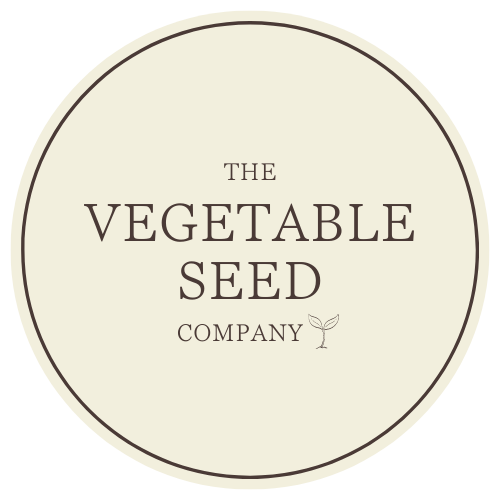
How To Grow Cauliflower UK
Share
Growing cauliflower from seed adds a delicious, versatile, and nutritious vegetable to any vegetable garden. You can add it to roast dinners, make cauliflower rice, and so much more with these veggies, and there's nothing quite like fresh cauliflower picked straight from your own garden.
Cauliflower belongs to the Brassicas family (the same one as Brussels Sprouts, Cabbage and Broccoli!)
Although typically we only see white heads in our supermarket, cauliflower varieties come in a range of colours and sizes (is there's anything better than mini cauliflowers?!) - so you can plant cauliflower that will grow purple heads.

Young cauliflower plants can be quite demanding, and hard to look after, but don't let that stop you - it's all about putting in the time and making sure you have all of the equipment and information you need for growing cauliflowers.
We've compiled a guide so that you can be experts at growing the perfect cauliflower head in your own garden!
Choosing the Perfect Cauliflower
Cauliflower plants thrive in a cooler environment, so in the UK, we have the perfect environment for growing cauliflowers in the Spring and Autumn.
With cauliflower, there are different maturity times for the varieties. Early varieties are ideal for areas with a short growing season, or if you want to harvest cauliflower early. Main crop varieties take longer to mature and are ready to harvest around late summer. Late varieties are slow-growing but are perfect for an Autumn harvest.
If you want something unique, consider colored cauliflowers like 'Graffiti' (purple), 'Cheddar' (orange), or 'Romanesco' (green). These add visual interest and can be more nutrient-dense.
If you prefer a variety that can be grown and harvested throughout the year, 'All Year Round' is a reliable choice in the UK.
Preparing Your Soil
Soil prepping is a step that you don't want to miss as it's incredibly important. Cauliflower thrives in fertile, firm soil that is rich in organic matter.
Before sowing cauliflower seeds or planting young cauliflower plants, improve the soil by adding garden compost or well rotted manure. This provides all the nutrients needed for healthy plant growth.

When growing cauliflower, it's important to protect plants from cabbage pests like cabbage root fly. This pest can damage the brassica roots of young cauliflower plants. Using brassica collars or fine netting helps prevent these pests from laying eggs at the base of the plants.
To protect your cauliflower seedlings from pests like slugs and snails, consider companion planting. Plants like marigolds can repel harmful insects, while herbs like sage or mint can deter cabbage caterpillars.
When To Sow Cauliflower Seeds
Inside
Start sowing seeds indoors in early spring, typically from late February to April. This gives your cauliflower seedlings a head start before they are transplanted outside.
Use seed trays filled with good-quality compost. Sow the seeds about 1 cm deep and cover lightly with compost.Keep the seed trays in a warm place, ideally at 18-21°C, to encourage germination.
Once the cauliflowers have developed a few leaves and are strong enough, they can be transplanted outside after hardening off. This is usually done in late spring when the risk of frost has passed.
Outside
You can start sowing seeds directly outside from late spring to early summer, typically from April to June.
Sow the seeds in rows, spacing them about 45-60 cm apart, depending on the variety. This allows enough space for the cauliflower heads to form.
Once the seedlings are large enough, thin them out to the recommended spacing, ensuring that each plant has enough room to grow.
Transplanting Young Plants
Transplant your young plants that were sown indoors outside in late spring or early summer when they have developed a few leaves and the risk of frost has passed.
Before transplanting, harden off your young plants by gradually exposing them to outdoor conditions over a week. This helps the cauliflower crop adjust to the temperature and sunlight.
Top Tips & Care For Cauliflower Plants
Consistent moisture is crucial for cauliflower plants, as they are sensitive to drought. Water regularly to keep the soil moist, but avoid water logging, which can lead to root problems.
Apply a balanced fertiliser to support healthy growth and head formation. A nitrogen-rich feed can be particularly beneficial during the early growth stages to encourage robust leaf development, while a balanced fertiliser will support overall plant health as heads begin to form.
Mulching around your cauliflower plants helps retain soil moisture, suppress weeds, and maintain a consistent soil temperature. Apply a layer of organic mulch, such as straw or compost, around the base of the plants.
Regularly check for weeds and remove them to reduce competition for nutrients and water. Proper mulching and weeding practices contribute to healthier plants and a more productive crop.
Harvest your cauliflower heads when they are firm and compact, typically when they reach about 15-20 cm in diameter. Use a sharp knife to cut the head from the plant, leaving a few leaves for protection.
Avoiding Cabbage Root Fly
Cauliflower is prone to pests like cabbage root fly, cabbage caterpillars, and diseases such as club root. Protect your plants with barriers like fine netting to prevent pests from laying eggs at the base.
Rotate crops and avoid planting cauliflowers in soil previously affected by club root to reduce disease risk. Monitor plants regularly for signs of pests and diseases, and address issues promptly with organic or chemical controls as needed.
